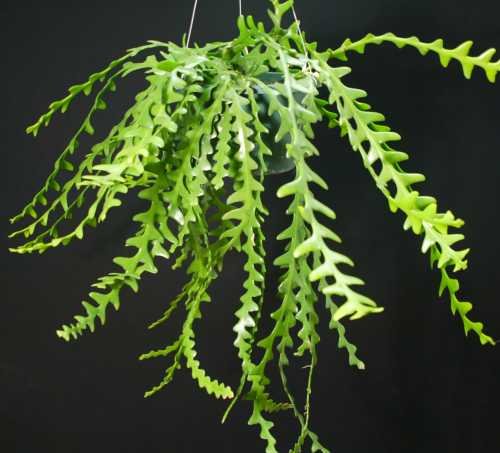
This plant is epiphytic and thus grows without the need for soil substrate, it's naturally found in tropical forests, growing in the forks of tree branches or in rock crevices where enough humus has accumulated to retain moisture. This succulent species originates from Mexico and is commonly grown as an ornamental plant both outdoors in frost-free climates and also indoors as a popular houseplant. You could use 2/3 cactus compost (or general houseplant compost) to 1/3 perlite, grit or orchid bark. The fishbone cactus will like a loose, well draining soil. Start with the biggest stem in the center and work from there. However, in my own experience, I do not use a humidifier or a water tray, I have several fishbone cactus that are all happy without that increased level of humidity. Never allow temperatures to fall below 50F (10C) so keep this in mind if you summer your houseplant outdoors. These plants need warm temperatures to thrive, so keep your indoor temperatures comfortable. Arrange the fishbone stems in a way that looks good to you and that they will have enough room to grow. I’d recommend placing your fishbone cactus right in front of an Eastern window or Western window. Carefully remove the soil from the roots. Start by removing your plant from its pot. Lobes are rounded to rectangular and this species produces 6-20cm long, yellow or white, nocturnal and sweetly scented blooms. But repotting a fishbone cactus can cause its own challenges.

The leaves are deeply lobed leaves and can reach 20-30cm in length. Various factors like water, light, soil, fertilizer type, temperature, and humidity affect your plant. Use a sterilized knife to cut away a chunk of the stem, measuring around 3.5 inches, off from the mother plant. Fishbone cactus are low maintenance and do not require constant care. The easiest and the most common way to propagate the Fishbone Cactus is through the use of cuttings of a healthy and mature Fishbone plant. This means that it can grow and thrive in low soil conditions pretty well too. Due to this plant’s need for lots of moisture, mist the plant regularly to give it an extra boost of hydration, particularly during the hotter summer temperatures. The fishbone cactus is widely popular as an indoor plant as it is an epiphyte or an air plant. In the natural environment, it grows in dry weather and high temperatures.

It prefers to grow in warm weather conditionswith low rainfall and coarse soil.

It can also tolerate lower temperaturesbetween 50 and 60 degrees Fahrenheit for shorter periods.
Fishbone cactus plus#
It forms long woody stems with succulent, flattened, smooth and green leaves measuring between 3-5cm wide. While Fishbone cactus can survive the occasional bout of dryness, extended dry periods will damage or kill the plant. Epiphyllum anguliger, more commonly known as the fishbone or zigzag cactus, is a fun, non-spiky plant that will add movement to your room plus it’s non-toxic for pets and people. Fishbone Cactus grows well in the temperature range of 60 to 80 degrees Fahrenheit. It was also well known by the name Epiphyllum anguliger, however it was recently reclassified and is now included in the genus Disocactus. Disocactus anguliger is commonly known by the names Fishbone Cactus or Zig Zag Cactus after its characteristic fishbone-shaped, zig-zagging foliage.


 0 kommentar(er)
0 kommentar(er)
